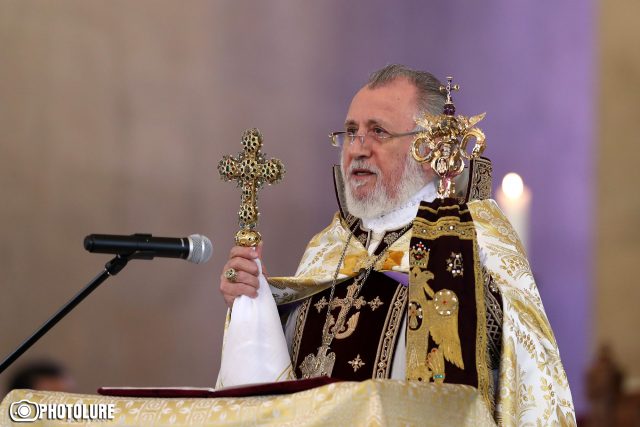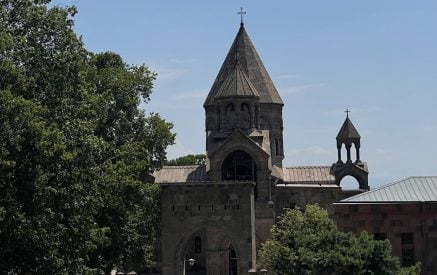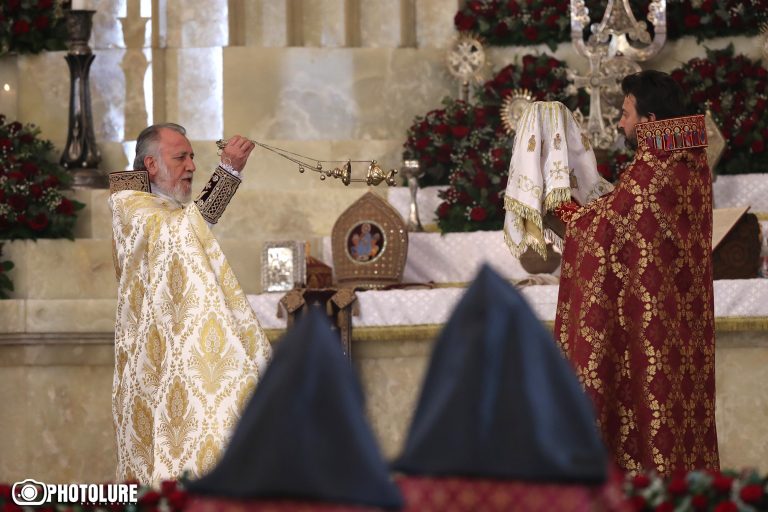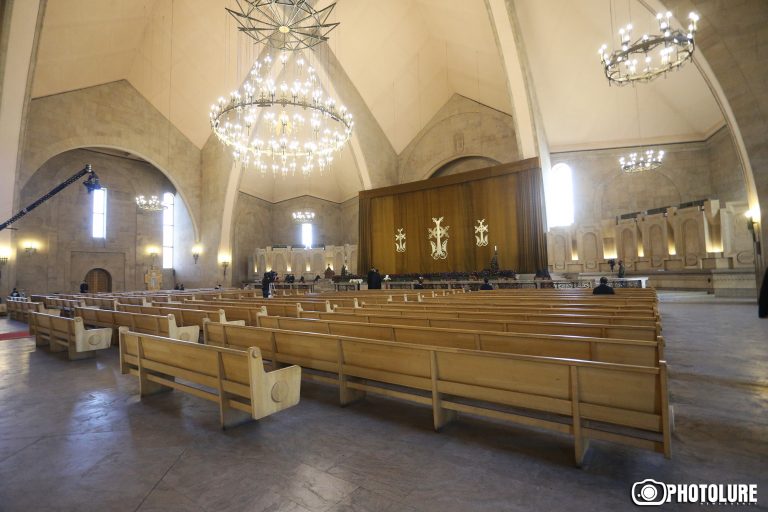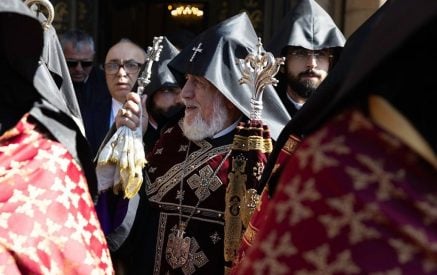His Holiness Karekin II presides over Divine Liturgy on Easter Feast.
Today the Armenian Church celebrates the Feast of the Glorious Resurrection of Our Lord Jesus Christ or the Easter Feast, one of the five major feasts of the Armenian Church.
Resurrection of Christ became the basis of the Christian doctrine and faith. “If that is true, it means that Christ has been raised from death, then we have nothing to preach and you have nothing to believe” (1 Co 15:13-14).
Christ rose from the dead, by means of His Death He destroyed Death and granted eternal life. “I am the Resurrection and I am the Life. Whoever believes in me will live, even though he dies; and whoever lives and believes in me will never die” (Jn 11:25).
Read also
Christ died for the salvation of mankind and by His Blood took away the sin in the world, so that we should inherit eternal life.
On the day of the Easter feast people dye eggs red as a symbol of fruitful life, salvation and joy. St. Gregory of Datev considers the egg to be the symbol of the world, the shell of which is the sky, the membrane is the air, the white is the water and the yolk is the earth. Dyeing eggs red symbolizes the salvation of the world by means of Blood of Christ.
The Armenian Church celebrates the Easter Feast on the first Sunday following the full moon of the vernal equinox, with 35 days moveability, during the period from March 21 –April 26.
The Armenian Church traditionally celebrates evening Divine Liturgy on the evening prior to Jesus Christ’s Glorious Resurrection (Easter). Following the conclusion of the Liturgy, the assembled faithful take lit candles home, symbolizing the Light that Christ brought into the world. The Divine Liturgy celebrated on the eve is the start of the festive ceremonies.




















































